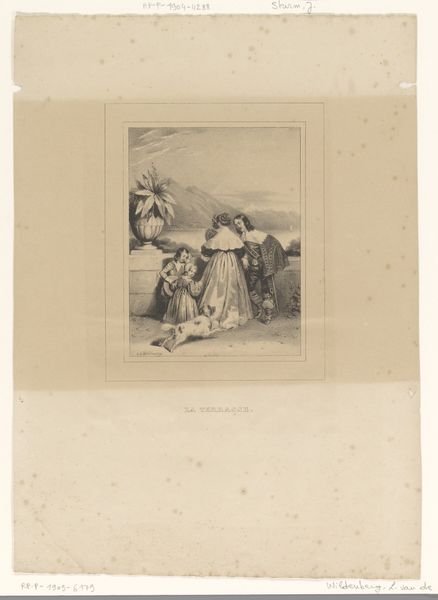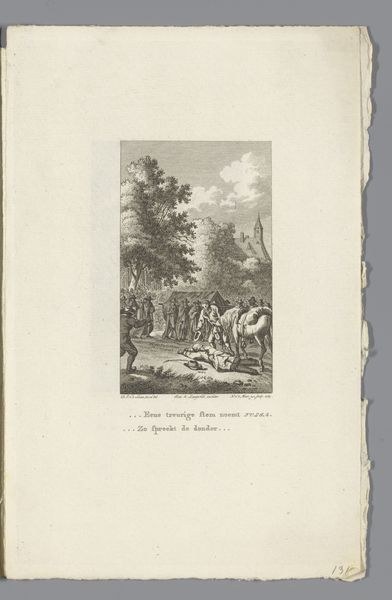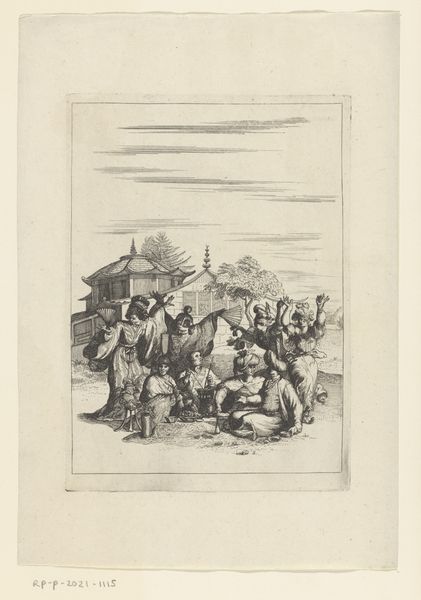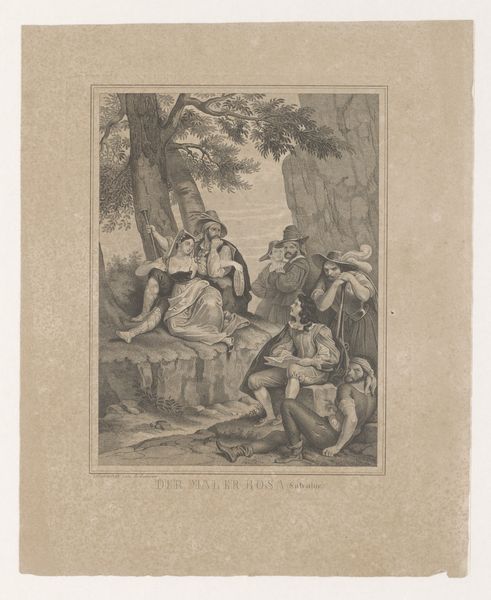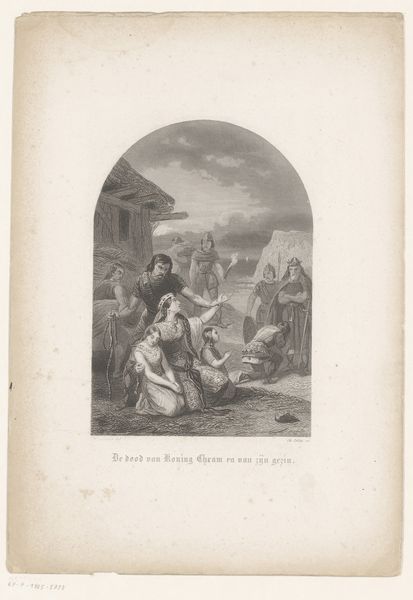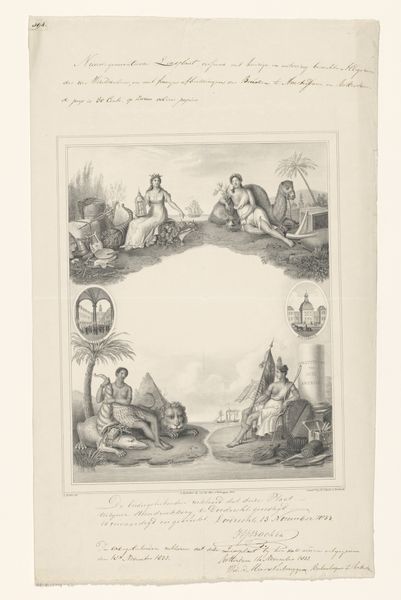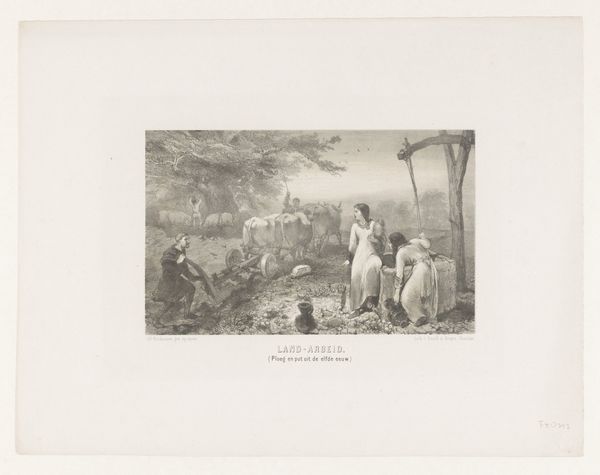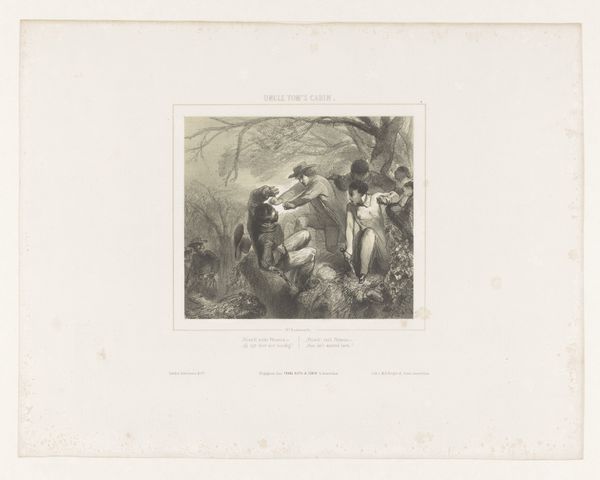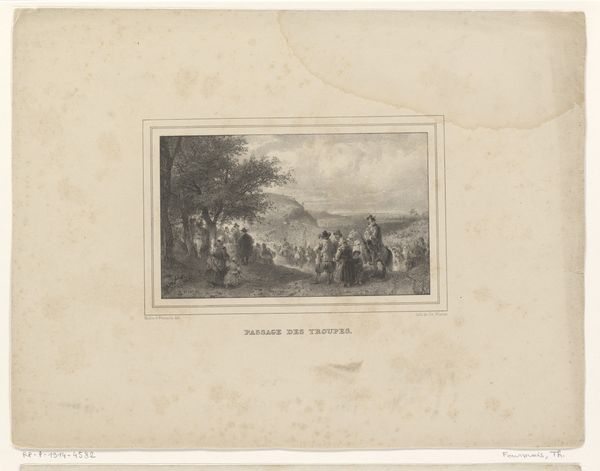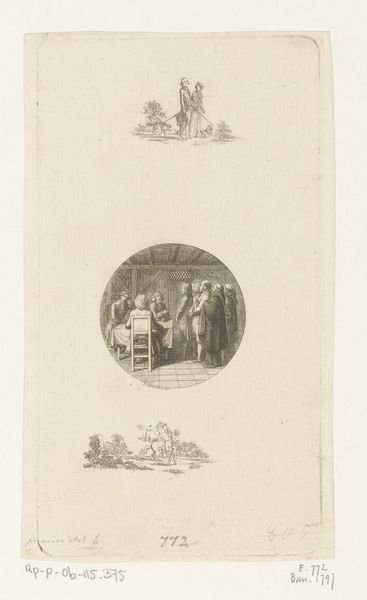
Gelijkenis van het onkruid tussen de tarwe, op de achtergrond Christus die vanaf een schip preekt 1800 - 1870
0:00
0:00
print, paper, engraving
#
narrative-art
# print
#
landscape
#
paper
#
romanticism
#
genre-painting
#
history-painting
#
engraving
Dimensions: height 291 mm, width 185 mm
Copyright: Rijks Museum: Open Domain
Curator: Here we have a print dating from somewhere between 1800 and 1870. Its lengthy title is "Gelijkenis van het onkruid tussen de tarwe, op de achtergrond Christus die vanaf een schip preekt." It's attributed to Emile Rouargue. Editor: It’s…striking. The foreground feels very earthbound and almost anxious, while in the distance there’s a sense of idyllic remove, like a hazy memory. There’s almost too much going on in the composition; my eye doesn't know where to settle first. Curator: The image represents the Parable of the Weeds from the Gospel of Matthew. It explores themes of good and evil, patience and judgment. Do you notice the contrast between the detailed, somewhat frantic activity of weeding in the foreground and the serene image of Christ preaching from a boat in the distance? Editor: Absolutely. The foreground figures seem trapped in their toil, heads bowed, while Christ seems almost ethereal. But it’s interesting that Rouargue chose to depict Christ preaching from a ship. The ship, often a symbol of safe passage or transition, here seems distant, almost inaccessible. Do you think that was a political statement on religious institutions at that time? Curator: Possibly. During this period, prints were powerful tools for disseminating both religious and political messages. Presenting Christ at a remove in the distance while the people perform manual labor can symbolize alienation or being removed from Grace by work. Perhaps here the viewer is being urged to meditate, not only on the Gospel teachings, but on their lived application and socio-political context of daily Christian living. Also notice how other iconographies enter the piece. Smoke is another pervasive symbol found throughout history. Editor: It’s fascinating how a seemingly simple religious scene can contain so many layers of cultural meaning, open to both interpretation and subversion depending on the socio-political atmosphere and viewer’s interpretation of received visual tropes and symbolism. Curator: The composition is both beautiful and troubling. As a piece intended to spur thought, contemplation and personal reckoning it surely does its job even for our present moment in history. Editor: Indeed. This work invites us to contemplate the nature of good and evil, to consider whether all that glitters is truly golden or merely a cheap imitation.
Comments
No comments
Be the first to comment and join the conversation on the ultimate creative platform.

